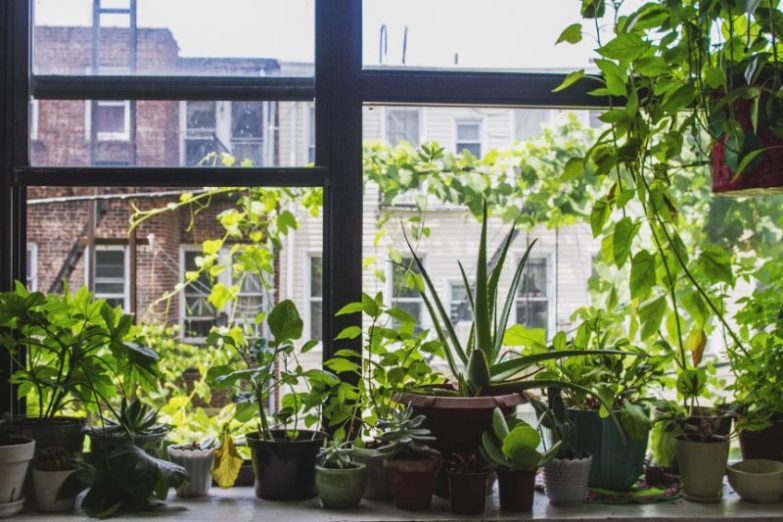Wilting is one of the most common problems you might encounter when caring for your houseplants. Whilst most will assume their plant needs a good drink of water, there are many causes, so you should be careful to identify the reason your houseplant is wilting before trying to fix it.
Why is my houseplant wilting? Houseplants most commonly wilt due to underwatering. However, other common causes include overwatering, temperature stress, pests, disease, low humidity, and fertilizer problems. It is important to observe and identify the problem before taking action.
This article is going to help you identify the correct cause of your houseplant wilting and explain the process you should use to identify and fix the problem.
What Causes Houseplants To Wilt?
Plants of all types use water pressure within their leaves and stems to maintain the structure and strength of the plant. There is a continuous supply of water from the roots, through the plant’s vascular tissue, xylem, all the way to the leaves.
Wilting is simply the loss of turgor pressure within non-woody parts of the stem. This can happen due to an imbalance between water absorption in the roots and water loss through transpiration. It can also happen if the transport of water through the xylem is interrupted for any reason.
Underwatering
Ok, so we’ll start with the most obvious one. Underwatering results in dry soil and insufficient water available for uptake by the roots. Water continues to be used by the plant and lost through transpiration. Eventually, turgor pressure reduces to the point where wilting occurs and your houseplant collapses in front of your eyes.
The point of wilting can be quite dramatic, with plants sometimes wilting in a matter of minutes or hours when they reach a tipping point.
Underwatering should be the easiest cause to identify. If you have not watered your plant for some time and the soil is very dry, then underwatering is the likely cause. You may also see brown crispy leaf edges or brown tips. There may also be shriveled leaves or leaf drop. Simply add water and stand back, as your plant will hopefully make a spectacular recovery.
Some plants can tolerate wilting better than others. Peace Lilies and nerve plants have a habit of collapsing spectacularly, only to recover nicely after they get a drink. Other, more sensitive plants will fail to recover fully even after wilting for only a short time. Try to avoid wilting due to underwatering in all plants, as even those that tolerate the issue well, will suffer after repeated episodes.
Read this article about how to water indoor plants to learn a few tricks to ensure your houseplants get the perfect amount of water.
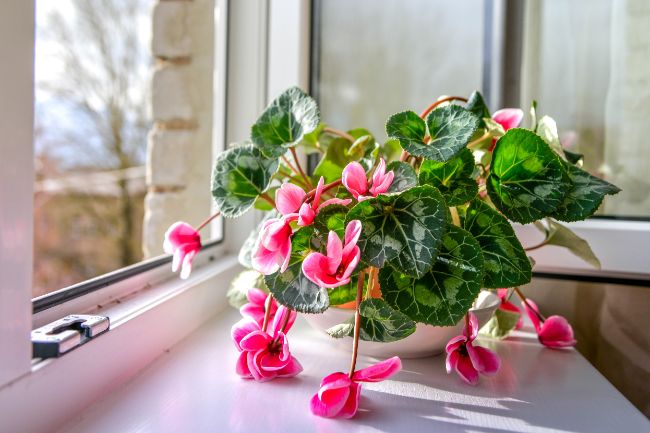
Overwatering
This is the exact opposite, and potentially much more serious. I mentioned that wilting is often caused by the plant not being able to absorb water. Interestingly, the exact same thing happens in overwatering, but for a very different reason.
When you overwater a plant, initially it will show signs of overwatering, with leaf edema and generalized leaf yellowing. With repeated or persistent overwatering, the roots will start to suffer and die. This happens as the waterlogged conditions in the soil prevent sufficient oxygen reaching the roots, resulting in root hypoxia, opportunistic anaerobic bacterial infections, and root death.
With dead roots, the plant cannot absorb water and will go thirsty in a sea of plenty. The trick with overwatering is to look for the early signs. If the soil of your plant is constantly saturated, the pot has poor drainage, or the soil drains very poorly, there is a high risk of wilting and root rot due to overwatering.
Feel the soil, inspect the leaves for generalized yellowing or signs of edema to help you identify the cause. Root rot will cause the roots to go brown or black and mushy. The soil may smell rotten, and the rot may even spread to the lower stem or leaves.
If you catch overwatering at the pont your plant is wilting, then it is likely game over for your plant. If you detect the early signs, then you can take swift action to save your plant. Read more about how to fix an overwatered plant here and learn more about detecting and treating root rot here.
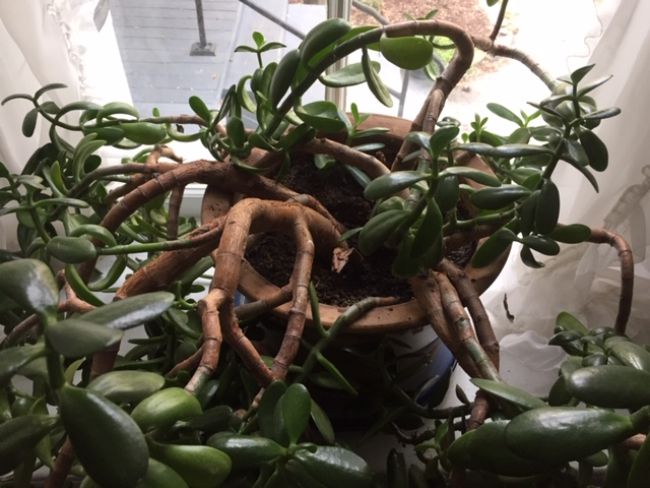
Temperature Stress
In contrast to watering issues, temperature stress is a game of two halves. Temperature stress is caused by the extremes of a plant’s normal temperature range. Most houseplants are from tropical regions where temperatures are in the 55-90°F. range. Temperatures outside this range can cause damage to plant leaves and stems and to plant roots if the exposure is for an extended period of time.
Excessive Heat
Excessive heat can sometimes cause direct damage to plant tissues, but the most likely cause of wilting is when high temperatures result in increased transpiration and water loss. This results in increased water demand, which the roots may not be able to supply.
Consider this issue if your plant gets a lot of direct sunlight, is located in a sunroom, or is near a radiator or hot air vent. It’s also important to remember that a plant that may have been perfectly happy sitting on a windowsill during winter may find it too hot and bright there during the summer.
Also, remember that the soil of a plant growing in hot conditions will dry out much more quickly than a plant in cool conditions. Adjust your watering regime to meet the plant’s needs.
Look for signs of sun or heat damage on the leaves such as scorch marks, leaf curling, leaf drop, brown tips or brown edges.
The solution to this one is to move your plant somewhere more pleasant and ensure it has sufficient water.
Coldness And Drafts
Temperatures outside a plant’s comfort zone or intermittent cold drafts can cause direct damage to a plant’s foliage or roots. without functioning roots, your houseplants will be unable to absorb water to meet the plant’s needs, resulting in wilting.
Whilst you’re unlikely to have to worry about your houseplants getting frost damage indoors, if you take any plants outside for the summer, remember to bring them in again in plenty of time before the cold nights of fall arrive.
Pests
Sap sucking pests can cause your plant to wilt due to excessive water loss, rather than lack of supply. The usual culprits are sap-sucking insects such as mealybugs, scale, aphids, thrips or spider mites. A few bugs aren’t usually too much of a problem, but a large infestation can lead to major leaf damage and water loss from your houseplant, resulting in wilting.
If your plant is wilting due to pests, you should see them on your plant without much difficulty. Spider mites are very tiny, so make sure to look closely. If you see any bugs, read this article to identify and treat the culprit.
Make a habit of checking your plants regularly (at least monthly) for early signs of plant pests. They are much easier to eradicate when you treat them before they infest the entire plant. Read my guide to identifying, treating and preventing common houseplant pests for more info.
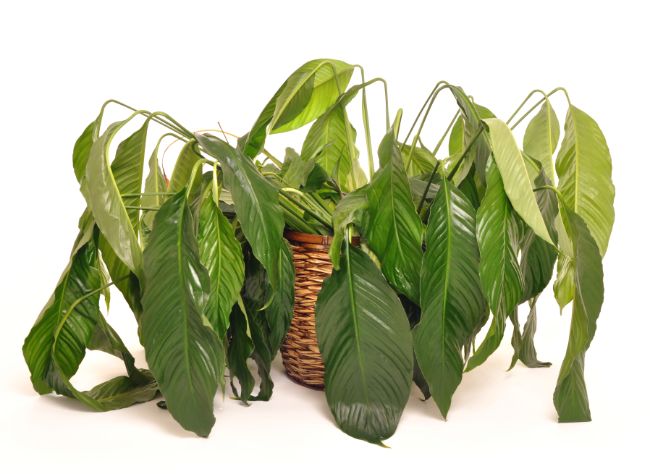
Disease
Diseases can cause wilting in two ways. Firstly, they can impact the health and function of the roots. Secondly, they can interrupt the flow of water and nutrients through the xylem tissues of your plant, resulting in loss of turgor pressure and wilting.
Inspect your houseplants carefully for any signs of disease and react immediately if you spot a problem. also remember to quarantine any plant that you think might have a disease, as you don’t want it to spread to your entire houseplant collection. Read my guide to identifying, treating and preventing houseplant diseases here.
I had a recent experience of fusarium wilt in my Begonia Rex ‘Inca Flame’ which highlighted the importance of taking immediate action. My plant was entirely healthy one day, and yet 24 hours later, 90% of the leaves were wilting and turning black.
The solution in these situations is to aggressively prune back all affected leaves, treat the entire plant with an anti-fungal, isolate the plant, and let the soil dry out well before watering again.
Amazingly, my Begonia managed to survive, although I have not been so lucky in the past. Hopefully, you are able to spot any disease problems early too and save your plants.
In a lot of situations, diseases result from conditions that are too wet, with insufficient airflow and soil drainage. Take care to avoid overwatering, plant your houseplants in well draining soil, in pots that aren’t bigger than the plant needs and ensure good ventilation. With these tips, hopefully, diseases will not be a common cause of your houseplants wilting.
Low Humidity
Many houseplants require humidity levels a little higher than are typically normal in our homes. Most houseplants are able to cope ok, although low humidity may leave them looking less than their best.
There are some houseplants, such as calatheas, ferns, some orchids for example that really do prefer high humidity levels, and will let you know if the humidity levels in your home are suboptimal.
Low humidity will be most common in arid climates, inside in winter, where central heating dries the air, or in rooms that receive a lot of direct sunlight. Sensitive plants will often wilt quite spectacularly in these conditions, particularly if coupled with sparse watering.
When growing plants with high humidity requirements indoors, try to take steps to ensure you are meeting their humidity requirements. More than 50% humidity is normally just about sufficient for picky plants, although those I have mentioned will do best with >60%.
Use a humidity tray, group your plants together, locate them in a bathroom or kitchen, or use a humidifier to ensure they get sufficient humidity to prevent wilting. Read this article for more ideas on how to improve humidity levels for your houseplants.
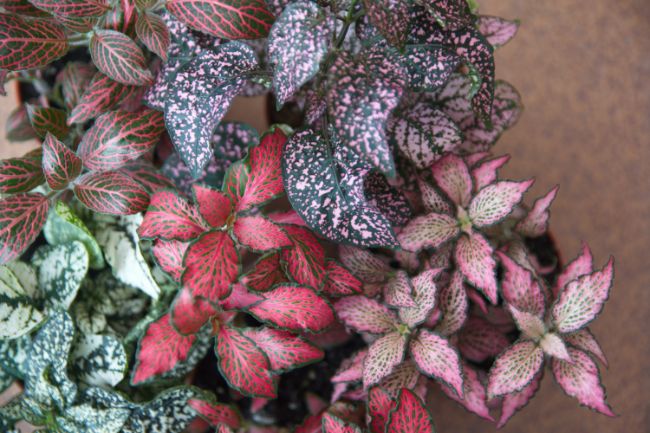
Fertilizer Problems
Fertilizer issues are also a potential cause of your houseplant wilting. Forget about underfertilizing, as this is unlikely to be the cause. Overfertilizing is by far a more significant problem. It’s so tempting to add just a little too much fertilizer to your houseplants in the hopes that they will grow larger and more beautiful than ever.
However, it doesn’t work like this. You only need to give your houseplants enough fertilizer to prevent nutrient deficiency and ensure they have enough for their growth needs. Too much fertilizer can cause symptoms of toxicity, and even chemical damage to the roots of your plant.
This is the mechanism by which it causes wilting. With damaged or non-functioning roots, the plant will be unable to absorb sufficient water for its needs, resulting in wilting.
The solution is to flush the soil out with copious amounts of water. This will wash excess fertilizer salts out of the soil and the plant can start the process of recovering. Prevention is as simple as taking it easy with the fertilizer. I normally recommend using half the concentration of fertilizer recommended on most general-purpose fertilizer labels. Read my guide to fertilizing houseplants to learn more.
Say Goodbye To Houseplant Wilting
Hopefully, this has given you some helpful advice for the next time you spot a wilting houseplant. Houseplant care really is all about observing your plant and the growing conditions. Whether things go well with your houseplants, or you are running into problems, you will be constantly learning and improving your indoor gardening skills.

